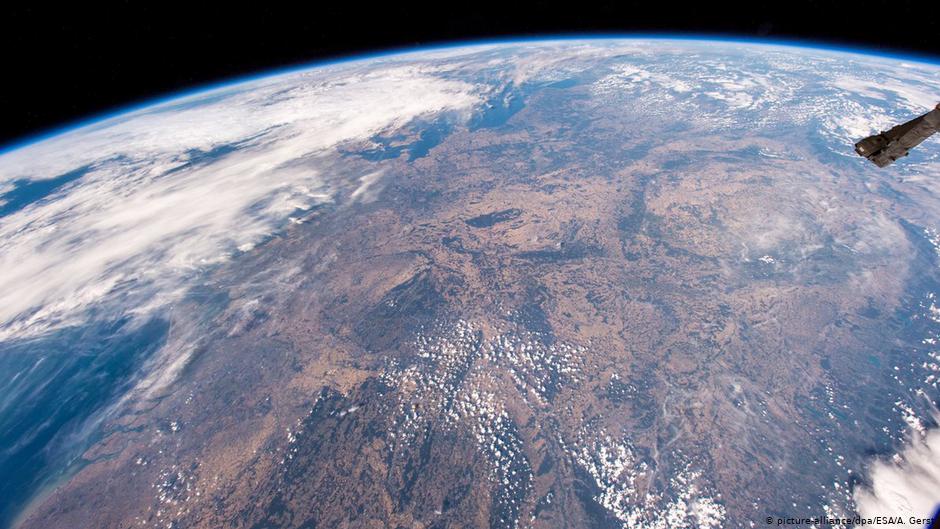Can humid regions be affected by droughts? German farmers say, yes they can
This article was written by a participant of the Global Center on Adaptation’s Young Leaders Program. The program develops young talent to become future leaders in global climate change adaptation efforts by enhancing their knowledge, skills, and ability to thrive in an international environment.
D
rop cap Droughts can pose a challenge to grasslands growth, which is closely linked to agricultural production in northern countries. They affect plant development, cause plant mortality, increase the spread of plant diseases or pests and degrade soil quality.
But can droughts affect the agricultural systems of countries with regions with humid climates like northern Germany? The answer is yes. According to an article published by the EU Joint Research Centre (JRC), extreme droughts could become the norm during spring and summer in northern Europe within the next 25 years. To make matters worse, they won’t happen in a predictable pattern.

Daniel Flores Corral
German losses
Droughts are typically thought of as a phenomenon that happens mainly in countries with semi-arid or arid climates. But this is not the case. They are location and duration-specific natural events. This means that if there is almost no rain for one month in northern Germany, a drought might be taking place; as opposed to parts of Egypt in which a month without rain would be a perfectly normal occurrence.
According to an article published by the Deutsche Welle, in Germany, the record droughts of 2018 hindered plant development and affected farmers’ livelihoods. Around 8000 farmers affected applied for governmental aid to deal with their financial losses. Germany registered the warmest four-month period in 2018 since records began and almost 90% of its territory felt the effects.

A dry central Europe, as seen from the International Space Station in 2018. Photo courtesy: ESA
Extreme weather events, such as droughts, floods, storms, and wildfires, will increase in intensity and frequency as the planet gets warmer, affecting the livelihoods of millions of people.
In northern and central Europe, grasslands play an important role in our food systems. They are used and maintained by farmers to sustain animal grazing and to restore soil for agricultural purposes. Grasses are grown, cut and harvested in spring, summer, and autumn so that the cattle can eat in winter when the grasses do not grow. They also have the potential to be used as a climate change mitigation tool, storing between 28%–37% of global soil organic carbon. Grasslands are able to provide a buffer against climate variability, as they contain a diversity of plant species that respond differently to extreme environmental phenomena and contribute towards building healthy ecological communities.
Early warning
Can we do something to help farmers adapt to climactic events that can’t be predicted? The German government thinks we can. As a response to the 2018 drought, Germany’s National Meteorological Office (DWD) developed an early-warning system that forecasts soil moisture six weeks in advance, giving farmers time to prepare for possible droughts. The system aims to help farmers adjust their fertilizer and water usage, and decrease cattle grazing to avoid increasing pressure on the grasses. Additionally, it improves preparedness and decreases the risks associated with crop and food loss.
Such early warning systems are a useful solution to the challenge that many meteorological experts around the world face. When rainfall is scarce, plants make use of the water stored in the soil from winter and spring rainfalls. Assessing the status of the water content in soils gives farmers the chance to know when plants will need irrigation water and adapt in case there is no rainfall. They can also adjust their practices to reduce plant stress, as a heavily grazed grassland might not be able to withstand a drought event as well as one that is managed more sustainably.
Furthermore, an early warning system can save money for governments too. Doling out emergency aid to farmers every time there’s a drought will be expensive. According to Deutsche Welle, farmers reported a drop of around eight million tons of grain yield by August 2018, costing the industry around 1.4 billion euros. The Climate Technology Center and Network meanwhile reports that costs associated with setting up and operating such early warning systems are low.
Other measures
In combination with other measures, such early warning systems can help farmers become resilient to climate variability and change. Forewarning of a drought gives local decision-makers the chance to distribute emergency food supplies, execute water harvesting and irrigation programs, or introduce “smart” farming initiatives. Still, early warning systems are not a silver bullet that will protect farmers entirely from all the negative impacts of climate change. They work best in combination with other adaptation measures and require robust policies and implementation plans to be effective.
Some of these additional adaptation measures include:
- Increasing the diversity of grass plant species – to contribute towards building healthy and resilient ecological communities
- Increasing knowledge about the issue – to help farmers and policymakers to know which adaptation measures are most effective
- Increasing the volume of research into the impact of drought in humid and sub-humid areas (as opposed to arid and semi-arid climates)
- Incorporating drought studies into the future development plans of humid regions as soon as possible, so that farmers can start adapting gradually
- Making use of “smart” farming techniques such as: rotating the grazing of the cows so that the plants can recover, using organic fertilizer to increase the water holding capacity and making use of grasslands to restore soils
The ideas presented in this article aim to inspire adaptation action – they are the views of the author and do not necessarily reflect those of the Global Center on Adaptation.